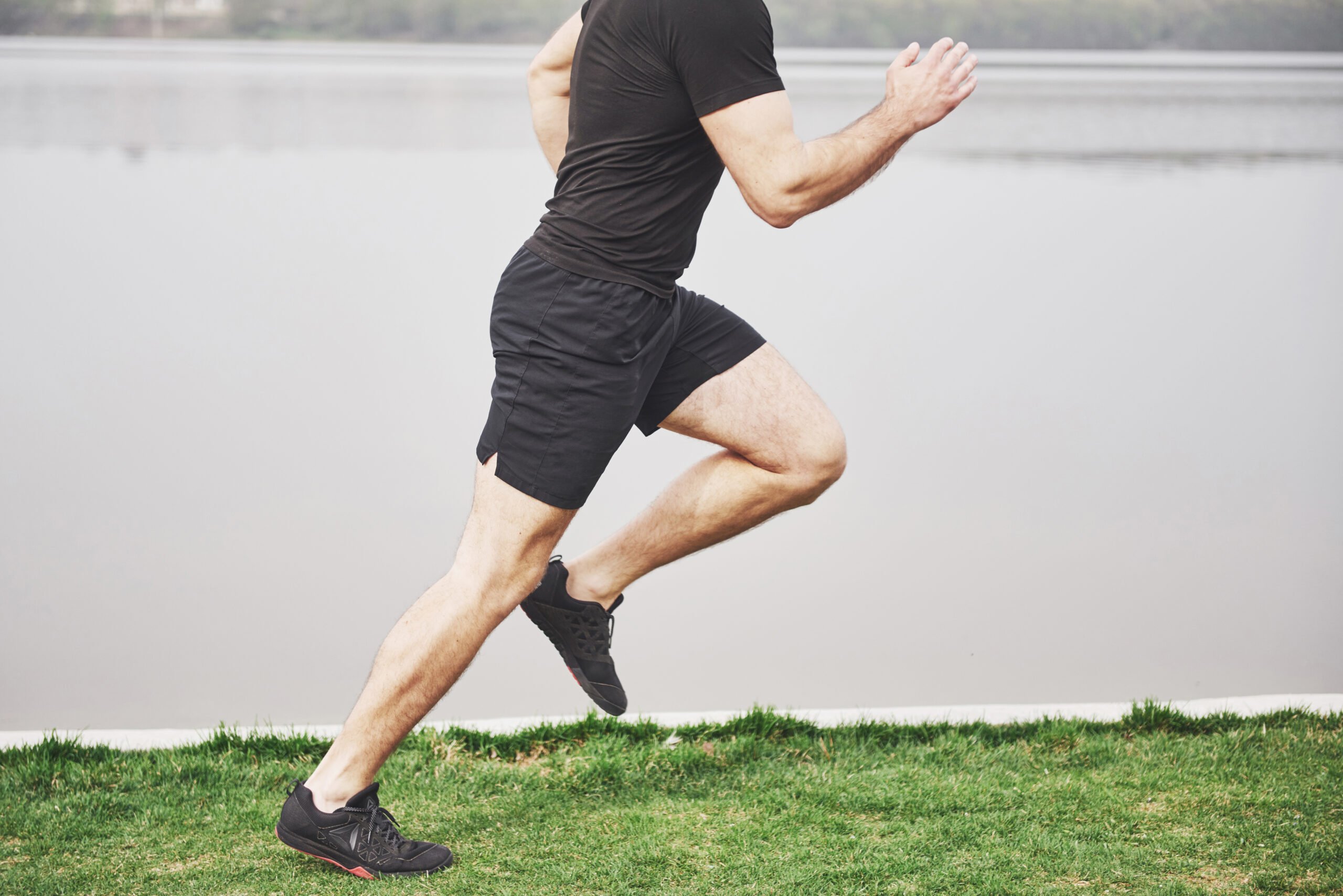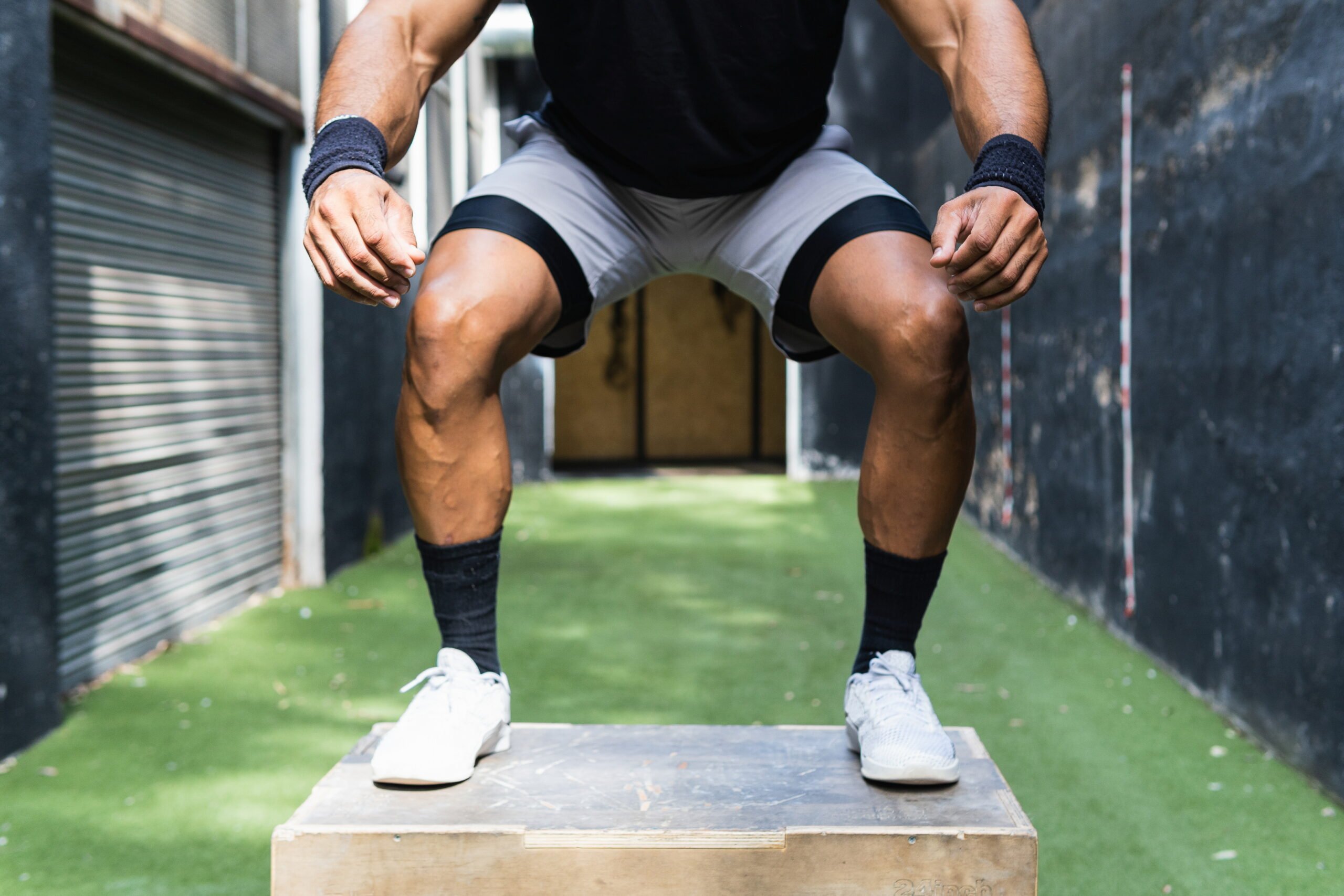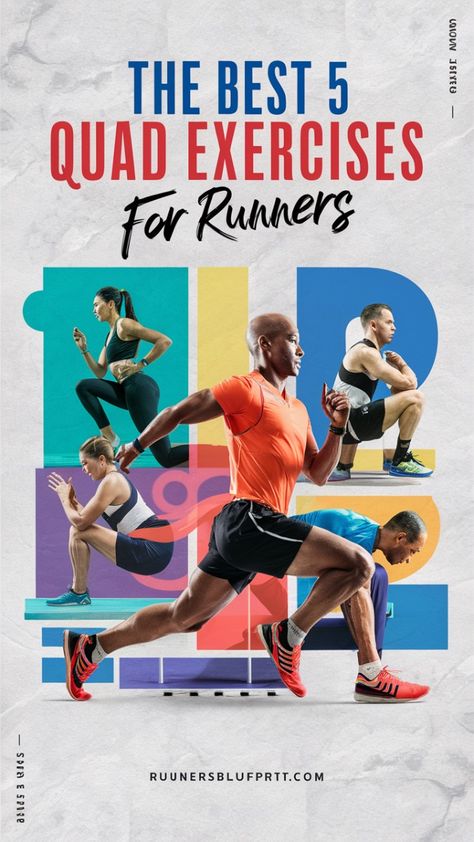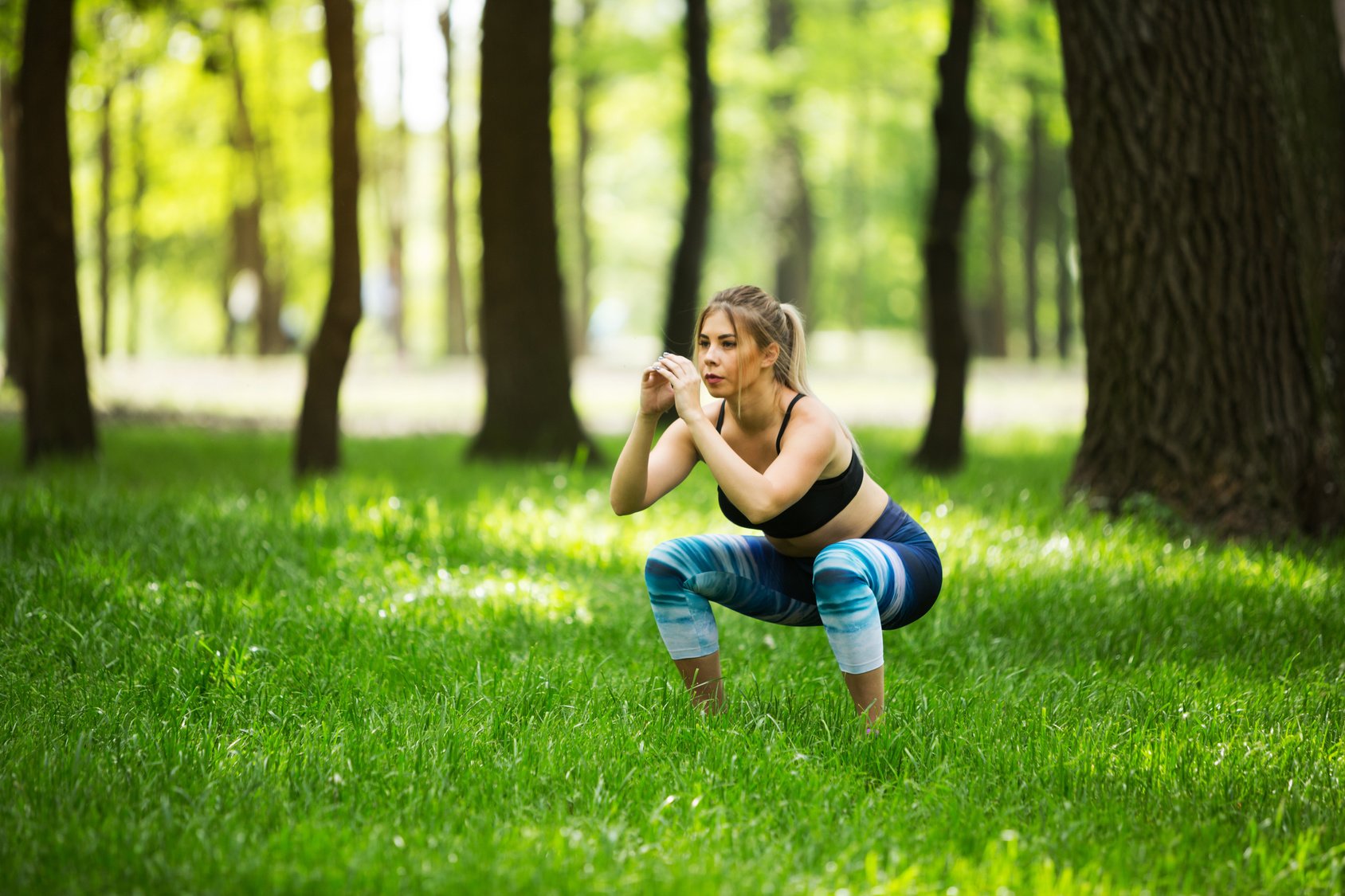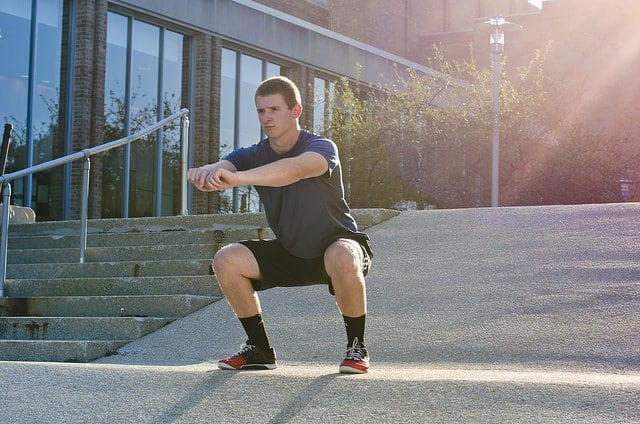Strength training has been a game-changer for my running, and it might be for you too
I didn’t pay enough attention to my quads at first, and that was a mistake
And if there’s one muscle group that deserves focus, it’s definitely the quads.
These powerhouse muscles support your body with each stride and help propel you forward.
But don’t just take my word for it
Research shows that during an 8:00-per-mile pace, the quads are responsible for 35% of the force that pushes you ahead.
Your quads not only power each stride but also help protect your knees from pain
Let’s dive into how to strengthen this vital running muscle.
What Are the Quadriceps Muscles?
The quadriceps, commonly known as the “quads,” are a group of four muscles located on the front of your thighs. They’re some of the strongest muscles in your body and key for movement, stability, and power.
Here’s a breakdown of each one:
- Vastus Medialis: The teardrop muscle is located on the inner part of your thigh near the knee.
- Vastus Lateralis: Found on the outer part of the upper thigh, responsible for leg extension.
- Rectus Femoris: A key player in hip flexion, this muscle runs down the middle of your thigh.
- Vastus Intermedius: Positioned deep in the thigh between the vastus medialis and vastus lateralis.
These muscles extend your knee, so they’re important for activities like walking, running, and jumping.
Let me explain more why you should never ignore these important muscles.
Why Strengthen Your Quads?
Strengthening your quads can make a big difference for runners. Here’s why:
- Improve Speed: Strong quads give you the power to push off the ground, making it easier to run faster and take on hills.
- Injury Prevention: Weak quads are often linked to running injuries like runner’s knee. Strong quads help stabilize your knee and track your kneecap properly during your runs.
- Boost Endurance: If your legs get tired at the end of long runs, stronger quads can help delay that fatigue.
- Shock Absorption: Strong quads help reduce knee impact and protect against overuse injuries.
How to Strengthen Your Quads as a Runner
Ready to strengthen those quads? Here are some key tips
Start Slowly
As with any new training, take it easy at first. Gradually increase the intensity by adding more weight or reps over time.
Warm Up Properly
Warm up with 5 minutes of jogging, then do squats, lunges, or high knees to get your muscles ready
Proper Form
Good form is crucial, so focus on quality over quantity.
Don’t add reps if it means sacrificing good form.
Remember that as you make your training more challenging, you’ll perform fewer reps but still gain strength.
Don’t Forget Your Hamstrings
You also need to strengthen your hamstrings in conjunction with the quads.
Only focusing on quads can lead to muscle imbalances, so don’t neglect your hamstrings
As a runner, your quads might be already stronger due to the running motion. That’s why runners are more prone to have weaker hamstrings than quads.
I highly recommend stiff-legged deadlifts and leg circles for training your hamstrings.
The Top 5 Quad Exercises for Runners
These exercises target your quads from different angles, helping you build strength, stability, and power.
1. Squats
I started with bodyweight squats but added dumbbells for an extra challenge once I got stronger. Make sure your form is solid: keep your back flat, core engaged, and knees in line with your toes.
Ideal for building overall leg strength and improving balance, which is crucial for long-distance runners. Squats target the quads, glutes, and core, helping you develop a stable base that supports better form and reduces fatigue over long distances.
How to do it:
- Stand with feet shoulder-width apart, back straight, and core engaged.
- Lower into a squat by bending your knees and pushing your hips back as if you’re sitting in a chair.
- Go down until your thighs are parallel to the floor.
- Push back up through your heels to return to the starting position.
2. Single-Leg Squats (Pistol Squats)
When I first tried single leg squats, I had to hold onto a chair for balance. I can do them unassisted, and the strength gains have been huge.
How to do it:
- Stand on one leg, extending the other leg in front of you.
- Slowly squat down on the standing leg, lowering your body as far as possible while keeping your core engaged.
- Push through your heel to return to standing.
3. Leg Extensions
Leg extensions isolate the quads and target those muscles without engaging other lower-body groups.
How to do it:
- Sit on a leg extension machine with the pad resting against your shins.
- Extend your legs fully, squeezing your quads at the top.
- Slowly lower the weight, but stop before your knees reach a 90-degree angle.
4. Weighted Walking Lunges
I love this move because it’s dynamic and mimics the motion we use in running. Plus, it targets the quads, especially the rectus femoris, which is key for hip flexion.
How to do it:
- Hold dumbbells at your sides or place a barbell across your upper back.
- Step forward with one leg and lower your body into a lunge until both knees are bent at 90 degrees.
- Push off your front foot to bring your back foot forward, and continue walking in the lunge position.
5. Leg Press
I don’t use machines too often, but when I do, I love the leg press for its ability to isolate the quads. Just be careful to maintain good form and avoid locking your knees.
How to do it:
- Sit on the leg press machine with your feet shoulder-width apart on the footplate.
- Press the weight by extending your knees, keeping your back flat against the pad.
- Lower the weight slowly, ensuring your knees are aligned with your toes, and don’t bow inward or outward.
Frequently Asked Questions
I know you have many questions about to make the most out of quad exercises. Let me address some of the most common ones.
How often should I do quad exercises?
For most runners, I recommend doing quad exercises 2-3 times per week. This frequency strikes a good balance—enough to build strength without overloading the muscles, which could interfere with your running performance. If you’re just starting, begin with two sessions per week and work up to three as your quads adapt. Consistency here is key, so try to stick with it each week to see results.
Can quad exercises help prevent knee injuries?
Yes, strong quads play a big role in knee stability, which is essential for injury prevention. The quadriceps help to stabilize and control knee movement, reducing strain on the knee joint. This is particularly important for runners, who face repetitive impact with each stride. By strengthening your quads, you can help protect your knees from common injuries like runner’s knee and patellar tendonitis.
Should I do these exercises before or after my run?
This depends on your training goals. For injury prevention and general strength, it’s best to do quad exercises on cross-training days or after an easy run. This helps avoid fatigue on days when you need peak running performance. If you’re aiming to build explosive power for sprints or hills, try doing quad exercises after your run while your muscles are still warm. Just remember to allow 48 hours of rest between intense quad sessions to give your muscles time to recover.
What’s the best time to do quad exercises in my training schedule?
For injury prevention, you can add quad exercises on cross-training days or after an easy run. This helps build strength while keeping you fresh for more intense running days. If your goal is to build power for sprints or hill running, try doing quad exercises after your run, so your muscles are already warmed up. Keep in mind that recovery is key, so give yourself at least a day of rest between tough strength and running sessions.
Final Thoughts
Strong quads are key for running performance, endurance, and injury prevention. Incorporating these exercises into your routine will help you run faster, longer, and with fewer injuries. I’ve seen the benefits firsthand—it’s made a huge difference in my running journey, and can do the same for you.
So, are you ready to give your quads the focus they need? Lace up your shoes, hit the gym, and let’s build those powerhouse legs that will carry you across every finish line—stronger, faster, and injury-free!
The Conclusion
There you have it!
The above quad exercises are the best when it comes to increasing strength in your lower body, especially in the rectus femoris muscle.
Do this awesome quad workout on a regular basis if you’re serious about making real progress. Also, keep in mind to stay within your fitness level the entire time.
Here are more strength exercises for runners.
Please feel free to leave your comments and questions in the section below.
In the meantime thank you for reading my post
Keep Running Strong
David D.

